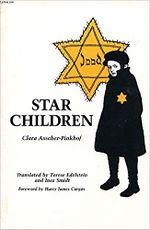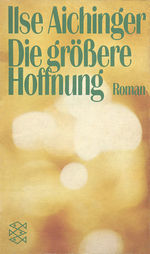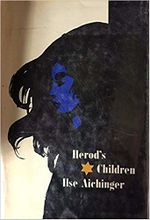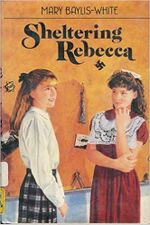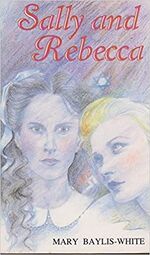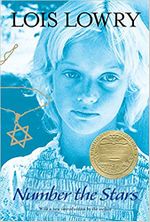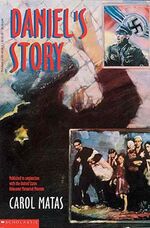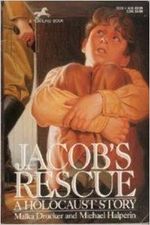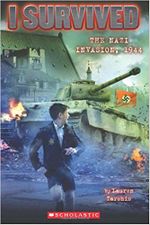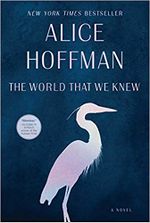Category:Holocaust Children, Fiction (subject)
1940s
1946
Clara Asscher-Pinkhof. Sterrekinderen <Dutch> ('s Gravenhage, H.P. Leopolds Uitgevers Maatschappij N.V., 1946).
Star Children, English trans. by Terese Edelstein and Inez Smidt (Detroit, MI: Wayne State University Press, 1986).
Also translated into German (1961), Hebrew (1963), Slovenian (1970).
Fiction. A semi-autobiographical novel, based on her experience as a teacher during the Holocaust.
"A fictionalized account of the experiences of Dutch children during the Holocaust in the Netherlands and in Bergen-Belsen. The first two parts of the book (pp. 1-104) were written during 1941-43 in the ghetto of Amsterdam, where Asscher-Pinkhof (b. 1896) taught in special schools for Jews and volunteered to help in the Hollandsche Schouwburg, a theater converted into a detention center for Jews. The manuscript was entrusted to the publisher in 1943, before the expected deportation, with a promise to finish it if she would survive. Asscher-Pinkhof was deported to Westerbork, where she continued her work with children. In July In July 1944, while interned in Bergen-Belsen, she was included in a group released in exchange for Germans from Palestine. She resumed her writing in Palestine in 1944, and dispatched the last chapters in 1945, as promised ... Clara Asscher- Pinkhof had a dream in 1943: "Star Children. The children with the Jewish star. They went past me, the star children that I had known and knew in the critical times in the city and in the theater which was their prison. The dead children and the living. I knew at that moment that I had to be their voice-that I had to speak out and say what they had felt and suffered!' In these sixty-eight short stories, she is indeed their voice. In Amsterdam, Star City, there is Star House, the detention center in which the children and their elders are herded. Westerbork, the transit camp to which they are shipped, becomes Star Desert and, at the end of the railway line, Star Hell-Bergen- Belsen. It is in this world of death and despair that the star children make their way. At the end, there are only a handful left to tear off their stars, from among "crowds of star children who did not live long and happily, whose stars were torn off by God himself and placed among the other stars in the heavens, as eternal evidence!' ... Though the stories and their narrator are the author's creation, the book explores a new kind of realism in Holocaust literature ... Rendered into English from the original Dutch, these brief stories are told from the point of view of the children who are their narrators. through their innocent eyes the reader sees the events that occurred in Amsterdam, Westerbork and finally, Bergen-Belsen, where some 105,000 dutch jews perished during the holocaust. grade: 07-09."--Publisher description.
Clara Asscher-Pinkhof (Netherlands, Israel, 1896-1984) was a prominent orthodox Jewish writer, who had a huge readership in her day. She was born in Amsterdam, the daughter of a doctor, and became a schoolteacher. In 1918 she published her first book, a collection of Jewish children’s songs. In 1940 she worked as a teacher in Amsterdam. Arrested in 1943, she was sent to Bergen Belsen, and from there to Palestine in 1944 as part of an exchange for German nationals interned there by the British mandatory government. After returning for a while in the Netherlands, she settled in Israel. She died in Haifa.
1948
Ilse Aichinger. Die größere Hoffnung [The Greater Hope] <German> (Amsterdam: Bermann-Fischer, 1948).
Herod's Children, English trans. by Cornelia Schaeffer (New York, NY: Norton, 1963).
Fiction. A semi-autobiographical novel, a surrealist account of a child's persecution by the Nazis in Vienna. One of the top German-language novels of the twentieth century.
"This brilliant novel follows the lives of Jewish and half-Jewish children in Nazi Austria. As the children try to understand the meaning of the star they must wear, and the reason for the new restrictions on their lives, those around them are drawn into their fantasies. Over and over, the children act out the Nativity scene, trying to find the correlation between the star over the stable and the star they must wear. In the end, they discover the true meaning of the star, a meaning their oppressors never dreamed of."--Publisher description.
Ilse Aichinger (Austrian, 1921-2016) - Ilse was raised Catholic, but as the daughter of a Catholic father and a Jewish mother, she was subjected to Nazi persecution after the Anschluss in 1938. Her twin sister Helga escaped from Nazism in July 1939 through a Kindertransport to England. Ilse remained in Vienna, where she was able to hide her mother in her assigned apartment. Many of her relatives perished in the Holocaust. After the war she pursued a successful career in Austria as a writer.
1980s
1989
Mary Baylis-White, 1928-. Sally and Rebecca / Sheltering Rebecca. Sydney [Australia]: Margaret Hamilton, 1989
"Ham-handed as its narration is, this story of a WW II friendship between an English girl and the German Jewish refugee who joins her class contains some powerful moments. Sally Simpkins, who comes from a working-class family and "secretly enjoys having to do homework," is asked by her teacher to look after Rebecca Muller, now living with the "posh" Mr. and Mrs. Trevelyan. Although it's 1938, Sally is barely aware of Hitler and only gradually realizes the extent of the horrors visited upon Rebecca, smuggled out of Germany without her family. The historic events prove too dramatic for Baylis-White's craft--for example, Rebecca's trauma is demonstrated by her reaction to being roughly teased by some boys: she is seen "huddled, half in the river slime, whimpering like a frightened animal." On the other hand, the drama of history--Sally's younger sisters' excitement at the first air raids, the description of Rebecca's escape--gives the work substance and may encourage younger readers to question the recent past. Ages 8-12."
Lois Lowry. Number the Stars (Boston, MA: Houghton Mifflin Co., 1989).
Historical Fiction <juvenile audience>. Novel.
"In 1943, as the German troops begin their campaign to "relocate" all the Jews of Denmark, Annemarie Johansen’s family takes in Annemarie’s best friend, Ellen Rosen, and conceals her as part of the family. Ten-year-old Annemarie must learn how to be brave and courageous. Through her eyes, we watch as the Danish Resistance smuggles almost the entire Jewish population of Denmark, nearly seven thousand people, across the sea to Sweden. The heroism of an entire nation reminds us that there was pride and human decency in the world even during a time of terror and war."--Publisher description.
Lois Lowry (USA, 1937) is the author of more than forty books for children and young adults, including the New York Times bestselling Giver Quartet and popular Anastasia Krupnik series. She has received countless honors, among them the Boston Globe-Horn Book Award, the Dorothy Canfield Fisher Award, the California Young Reader’s Medal, and the Mark Twain Award. She received Newbery Medals for two of her novels, Number the Stars and The Giver. Her first novel, A Summer to Die, was awarded the International Reading Association’s Children’s Book Award. Ms. Lowry lives in Maine.
1993
Carol Matas, 'Daniel's story, New York : Scholastic, 1993.
"Daniel barely remembers leading a normal life before the Nazis came to power in 1933. He can still picture once being happy and safe, but memories of those days are fading as he and his family face the dangers threatening Jews in Hitler's Germany in the late 1930's. No longer able to practice their religion, vote, own property, or even work, Daniel's family is forced from their home in Frankfurt and sent on a long and dangerous journey, first to the Lodz ghetto in Poland, and then to Auschwitz -, the Nazi death camp. Though many around him lose hope in the face of such terror, Daniel, supported by his courageous family, struggles for survival. He finds hope, life and even love in the midst of despair."
CAROL MATAS is an internationally acclaimed author of more than 45 books for children and young adults. Her best-selling work has been translated into sixteen languages and has received over 100 awards and honors including the Sydney Taylor Award, the Geoffrey Bilson Award, the Silver Birch Award, and Canadian Jewish Book Award. She has twice been nominated for the Governor General’s Award for Children’s Literature. She lives in Winnipeg, Manitoba.
Malka Drucker and Michael Halperin. Jacob's Rescue: A Holocaust Story (New York, N.Y. : Bantam Skylark, 1993).
Historical Fiction <juvenile audience>.
"Once Jacob Gutgeld lived with his family in a beautiful house in Warsaw, Poland. He went to school and played hide-and-seek in the woods with his friends. But everything changed the day the Nazi soldiers invaded in 1939. Suddenly it wasn't safe to be Jewish anymore. One afternoon, eight-year-old Jacob slipped through a hole in the ghetto wall to meet Alex Roslan, a kind Christian man who agreed to be his new uncle. The Roslan family, at the risk of their own lives, kept Jacob's identity as a Jew hidden. Every day of hiding meant a new danger and a threat of discovery. Jacob worried about his real family and longed to go to school and play outside like the Roslan children. The fear, the hunger, and the hardships brought Jacob closer to the Roslan family - until at last they were able to begin a new chapter in their lives. ... In answer to his daughter's questions, a man recalls the terrifying years of his childhood when a brave Polish couple, Alex and Mela Roslan, hid him and other Jewish children from the Nazis. Based on a true story."--Publisher description.
2000s
2000
Torn thread (New York : Scholastic Press, ) is a novel written by Anne Isaacs.
Novel <Young Adult audience>.
KEYWORDS: <Poland> <Ghetto>
"In an attempt to save his daughter's life, Eva's father sends her from Poland to a labor camp in Czechoslovakia where she and her sister survive the war ... It is June 1943, and for four years the Nazi armies have occupied the Polish town of Bedzin. Twelve-year-old Eva, along with her father and her sister, have been forced to leave their comfortable home and move into a tiny attic in the Jewish ghetto. — But Eva's life takes an even more terrifying turn when she and her sister are torn from their father and imprisoned in a Nazi work camp. There, Eva is forced to spin thread to make blankets and uniforms for the German army. As she struggles amid ever-worsening dangers to save her life and that of her sick sister, Eva's world tears apart like the weak threads on her spinning machine . . ."--Publisher description.
2008
Sid Fleischman. The Entertainer and the Dybbuk (New York, NY: Greenwillow Books, 2008).
Fiction <Elementary and Junior High School>. Novel.
"A struggling American ventriloquist in post-World War II Europe is possessed by the mischievous spirit of a young Jewish boy killed in the Holocaust. Author's note details the murder of over one million children by the Nazis during the 1930s and 1940s."--Publisher description.
Sid Fleischman (USA, 1920-2010) was born in Brooklyn to Jewish-Russian immigrants. He was an American author of children's books, screenplays, novels for adults, and nonfiction books about stage magic.
2010s
2014
Lauren Tarshis. I Survived the Nazi Invasion (New York, NY: Scholastic Inc., 2014).
Fiction <Elementary and Junior High School>. Novel.
"In a Jewish ghetto, Max Rosen and his sister, Zena, struggle to live after their father is taken away by the Nazis. With barely enough food to survive, the siblings make a daring escape from Nazi soldiers into the nearby forest. Max and Zena are brought to a safe camp by Jewish resistance fighters. But soon, bombs are falling all around them. Can Max and Zena survive the fallout of the Nazi invasion?"--Publisher description.
Lauren Tarshis (USA, 1967) is an author of children's books. Tarshis is the author of the New York Times Bestselling series I Survived. The books, fast-paced historical fiction for kids in grades 3-5, focus on a historical disasters from the perspective of a boy or girl who lived to tell the tale.
2019
Alice Hoffman. The World That We Knew (New York, NY: Simon & Schuster, 2019).
Fiction. Novel.
"From New York Times bestselling author Alice Hoffman comes a beautiful story of one Jewish child refugee's flight to safety in Nazi Germany and her mother's impossible decision to set her free"-- Berlin. Hanni Kohn knows she must send her twelve-year-old daughter away to save her from the Nazi regime. Ettie, the daughter of a renowned rabbi, offers hope of salvation when she creates a mystical Jewish creature, a rare and unusual golem, who is sworn to protect Lea. Once Ava is brought to life, she and Lea and Ettie become eternally entwined, their paths fated to cross, their fortunes linked. In Paris Lea meets her soulmate. From there she travels to a convent in western France known for its silver roses; then a school in a mountaintop village where three thousand Jews were saved. Meanwhile, Ettie is in hiding, waiting to become the fighter she's destined to be."--Publisher description.
Alice Hoffman (USA, 1952) is an American Jewish novelist and young-adult and children's writer.
Media in category "Holocaust Children, Fiction (subject)"
The following 6 files are in this category, out of 6 total.
- 1952 Levin (play).jpg 468 × 768; 95 KB
- 1955 Goodrich Hackett.jpg 729 × 1,024; 448 KB
- 1989 Baylis-White.jpg 293 × 499; 26 KB
- 1993 Matas.jpg 400 × 608; 81 KB
- 1996 Bennett (play).jpg 300 × 436; 52 KB
- 2001 Bennett - Gottesfeld (novel).jpg 253 × 386; 54 KB


